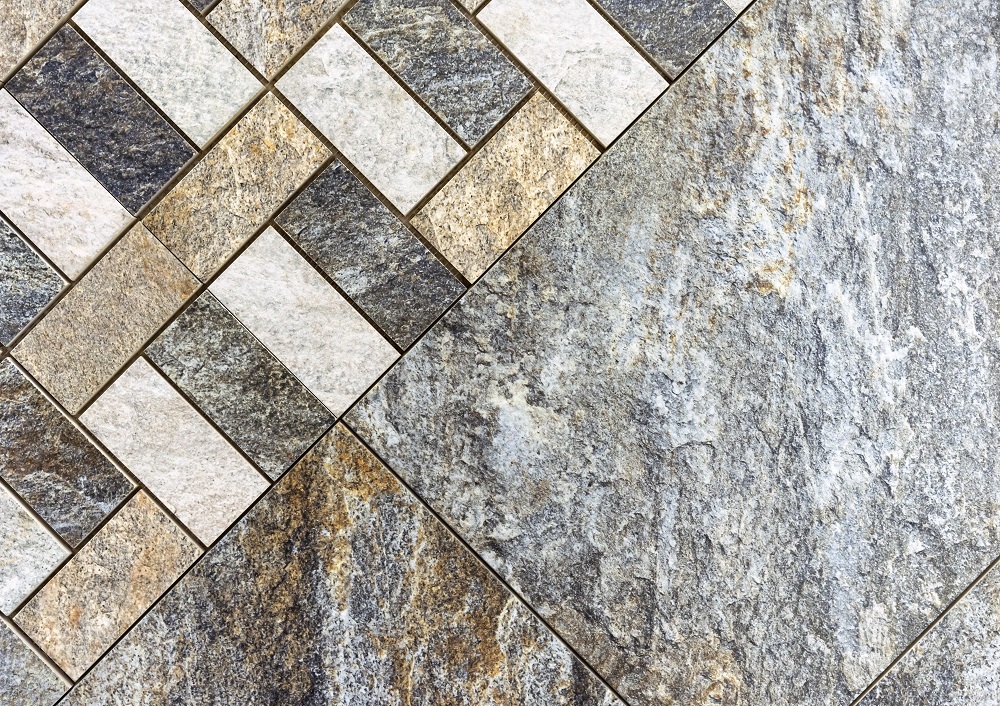By Viktor Chong
The tiles you choose for your home is equally important to that paint job you are planning for the makeover, if not, more so. Whether it be the tiles for the floor or the walls, your choice is important as you will be living with that decision for a long time. Unless you are planning to go through the hassle and cost of removing them later, it is important to familiarise oneself to the different materials and their respective attributes.
Ceramic
The ubiquitous ceramic tile makes its place in many homes due to its reasonable price point and durability. Since it is heat resistant, ceramic makes an excellent choice as a countertop besides its traditional usage as indoor flooring or walls. Together with porcelain, they come with a glazed or unglazed surface, and at a glance may appear indistinguishable.
However, ceramic differs from its porcelain counterpart based on a few properties. Unlike porcelain where the colour base runs right through the tile, ceramic contains different colours underneath the top glaze. Hence, chips and scratches are more noticeable, notwithstanding the fact that ceramic is also less dense, making it prone to cracking and breaking. Opt for the glazed version if you want better protection against wear and tear.
Porcelain
Another common tile used for flooring is porcelain. A strong contender to ceramic, porcelain has the added advantage of mimicking natural stone, wood and bricks, without the hassle of upkeep or weathering that naturally involve such materials. These patterns and colour variations provide homeowners with a vast variety of choices for decoration.
Besides the aesthetic value, porcelain is also highly resistant to heat, making it a viable layering for your countertop. Also, it is more dense than ceramic, hence its application at areas with high traffic, such as outdoor flooring. Even so, these added advantages come with a higher price point. Not unlike ceramic, porcelain has a low water absorption rate, making them a good choice for wet areas, such as the kitchen and bathroom.
Concrete
Few tiles beat cement when it comes to a combination of beauty and functionality. Cement tiles can last longer than ceramic and wood, but have a high rate of water absorption, making them less suitable for wet areas. However, this porosity may allow a patina to develop over time to enhance the looks. Since it is not fired, the surface lacks a glaze common to ceramic and porcelain. Maintenance is simple where cement is considered. If they ever get discoloured over time, simply sand it down and reseal just like a wood tile.
Marble
Marble tiles have always represented luxury and opulence, which lends testimony to its higher price tag. The gleam of polished stone is a visual not easily recreated in other forms of tiles, making it a choice material for palaces and abodes for the affluent.
Like any other naturally occurring stone, marble is a dense and porous material, As an added bonus, it delivers texture and depth with its natural pattern and veins. Nevertheless, it requires quite a bit of maintenance. Dilute acid such as vinegar, mustard and citrus will cause it to stain.
To prevent a permanent mark on the floor, any spills on the marble flooring needs to be cleaned immediately. Also, marble scratches easily, so it is best placed in a low traffic area such as the shower floor, wall cladding, column or backsplashes. Occasional polishing may be required to breathe life into your worn marble flooring.
Glass
Glass tiles constitute some of the most fragile tiles in the market, although there are exceptions. They are usually reserved for backsplashes, vertical cladding and ascent area since it is easy for them to chip around the corners or to receive scratches. Despite the fragility, glass makes up for it with their stain resistance. It retains its natural colour pretty well against red wine, lemon or vinegar, and is relatively low maintenance.
Another benefit of glass is that it reflects light, giving an area the illusion of spaciousness. Due to its transparency, the colour shows through the tile, providing additional depth and dimension. These attributes make the glass tile a great choice for decoration.
Travertine
Travertine charms the eyes with its timeless look and rustic feel. Its subdued colour palette evokes a calming effect into the atmosphere and can vary from beige, taupe, brown or slate grey. Since travertine is a naturally occurring material, it shares similar attributes to marble, such as the high variation among pieces. This means that no two pieces will share the same pattern.
The material is equally versatile, as it comes with different finishes for various applications. It can either be polished, brushed, honed or even tumbled. Travertine usually finds its way into bathroom floorings as the unpolished version has a naturally occurring nonslip texture.
As calcium carbonate constitutes the bulk of its component, it is susceptible to acids, and will not hold well against tractions. Hence, travertine will not make a good countertop or flooring where there is frequent traffic.
Stay ahead of the crowd and enjoy fresh insights on real estate, property development, and lifestyle trends when you subscribe to our newsletter and follow us on social media.





















































